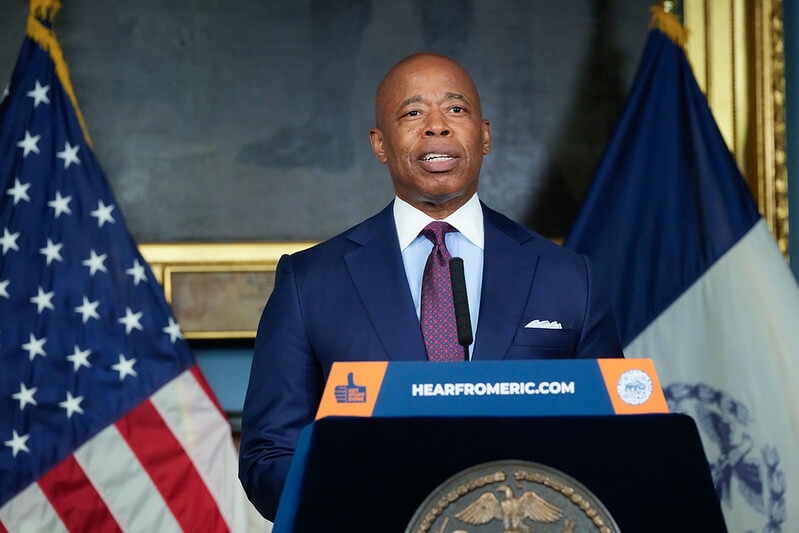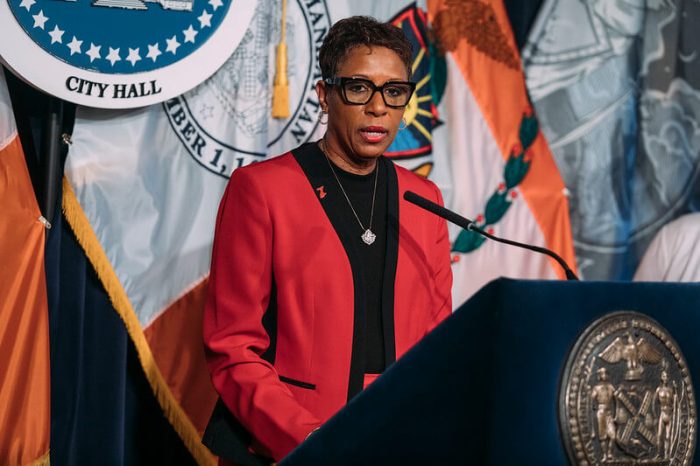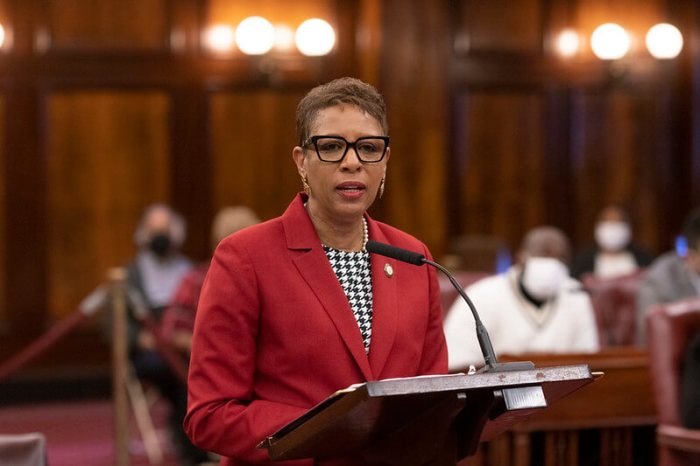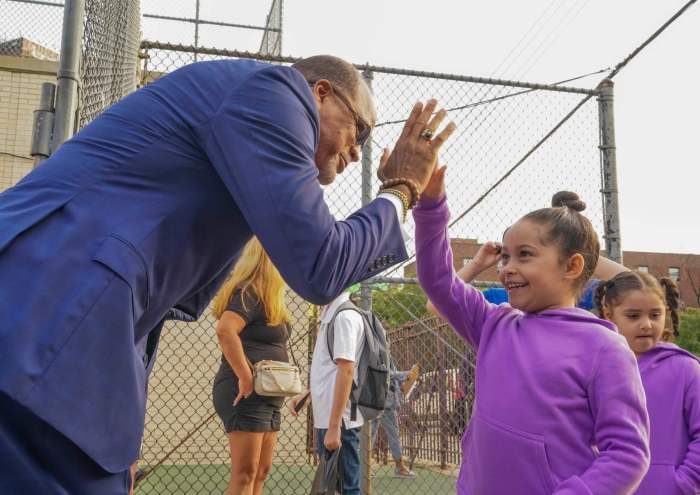Mayor Eric Adams on Tuesday said that $1 billion approved in the state budget for reimbursing the Big Apple’s migrant crisis spending won’t be enough to reverse recent wide-ranging cuts he’s made to city agency budgets in anticipation of the influx’s projected cost.
The $1 billion reimbursement, which will cover 29% of the city’s cost for sheltering the migrants over this fiscal year and the next, is part of the $229 billion state budget deal being passed this week, after being proposed by Governor Kathy Hochul earlier this year. The state spending plan is over a month late, as it was due to pass by an April 1 deadline.
Yet, while those funds are sorely needed, the mayor told reporters at an unrelated news conference on May 2, they won’t offset his administration’s estimation the crisis will take at least $4.3 billion out of the city’s coffers. He’s said repeatedly the projected tab for the influx is a large part of why he’s implemented cost-saving measures, which have shaved off billions of dollars across agency budgets.
“I don’t know if people are aware of what we said is the financial impact [on] the city: $4.3 billion,” the mayor said. “So because we are getting a billion, which is coming in layers from the state, do we go back and just spend wily again? No, the city must be efficient without layoffs and without cuts to services and we have to really acknowledge the turbulent forecast that’s in the future.”
Additionally, the city submitted an application to the Federal Emergency Management Agency (FEMA) at the end of March seeking $650 million to reinburse it for the cost of shelting and providing for migrants. That’s a portion of the $800 million Congress made available to cities on the frontlines of the crisis through an omnibus spending bill passed late last year.
When rolling out his Fiscal Year 2024 executive budget last week, Adams said his latest round of spending cuts — of which there have been three — saved the city $1.6 billion over the current fiscal year and the next. Those savings were achieved by trimming most agency budgets 4% and some by less.
The previous round of cuts, implemented in the mayor’s November Financial Plan last year, chopped a collective $3 billion across agency budgets.
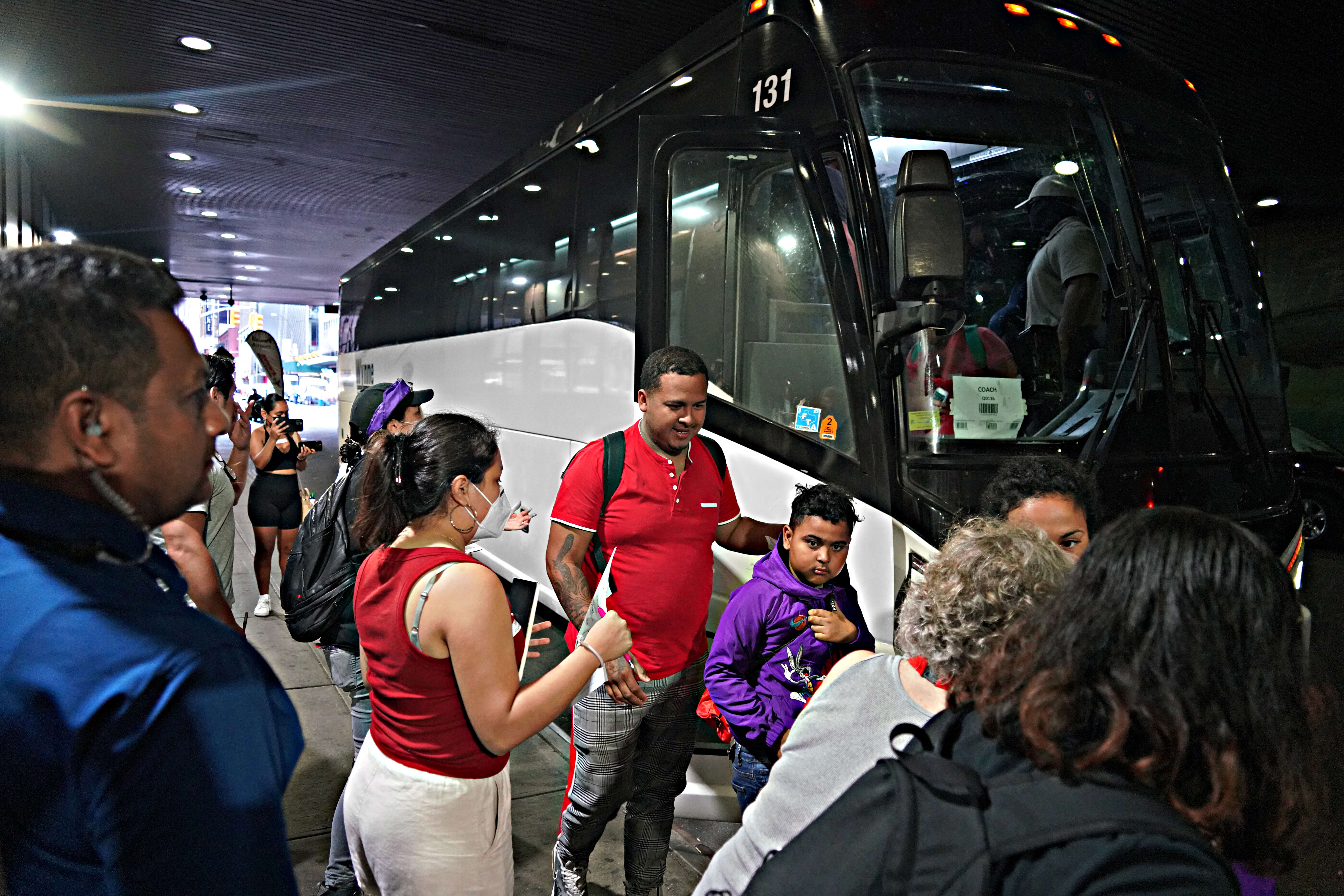
On top of the migrant crisis’ potential price tag, Adams said his gambits to slash costs are necessary in the face of a slowing economy and potential recession.
“Wall Street is not doing well,” Adams said. “We are seeing real challenges that the city is facing and we are going to be smart, prudent and protectors of New York City taxpayers dollars.”
Plus, Adams’ administration has set aside another $16 billion over the next few years to settle labor deals with several public sector unions. The city has already reached contract agreements with District Council 37 (DC37) and the Police Benevolent Association (PBA), worth $4.4 billion and $5.5 billion respectively, but still has to make deals with other major unions including the United Federation of Teachers (UFT).
The mayor’s comments come as over 59,400 mostly Latin American asylum seekers have arrived in the city since April 2022, with 36,800 currently in the city’s care, according to a mayoral spokesperson. The city is still receiving hundreds of migrants a day, they added.
Now there’s a potential the city could start receiving double that number, Adams recently said, when Title 42 — a pandemic-era White House policy used to limit the flow of asylum seekers into the country — is lifted on May 11. The expiration of that rule has already reportedly led Texas Governor Greg Abbott to once again start intentionally bussing asylum seekers directly to northern cities like New York and Chicago.
But the mayoral spokesperson declined to speculate on how much the expiration of Title 42 or the resumed bussing of migrants by Abbott will boost the number of people coming here each day.
“I can’t tell you how many we expect,” they said. “That all depends on those who plan to send the asylum seekers to us.”



